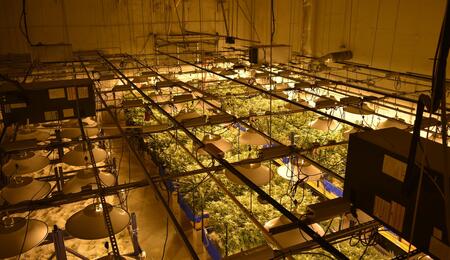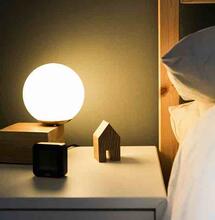7 Quick Tips for Setting Your Cannabis Grow Lights

For many growers, January is the month when they plan for the new growing season. For some, it might mean upgrading the lighting equipment in their cannabis grow room, and for others, boosting their knowledge and learning a few hacks on how to improve lighting to maximize buds production.
Proper lighting is one of the essentials to cultivate cannabis successfully. Just like when you screw with room temperature, moisture or overfeeding the plants, screwing with lights will also lead to poor cannabis plants. Pure cannabis found in nature is adapted to the environment and to the access of light it usually has, but when grown inside, knowing a hack or two on how to manipulate the best light for your growing buddies is more than helpful. Below are seven quick tips on optimizing your cannabis grow room's grow lights to boost your cultivation activities.
1. Stay informed on the strains
This one is obvious. With each strain, it’s different. With each strain, there come different lighting strategies to implement. While some will fare well with 18 hours of light and the rest darkness, others will do it with 12-12. Where it can get tricky is knowing how much light to use on the plant depending on its growth stage. For instance, growing Super Silver Haze will demand extra lighting hours during its vegetative stage to ensure the yield is good.
2. Adjust the height of your bulbs
Sometimes you may have sufficient light, but there’s a great distance between your low-reaching autoflower strain and your elevated light installation. At other times you are growing a tall plant, and it’s just too close to the lights, so much that the light is frying the top cola. In such cases, especially if you are growing different strains at different times of the year, it’s good to install a system that will allow you to adjust the height of your LEDs.
3. Maintain your cannabis grow lights
No matter if you use LED or standard lights, you need to check when they are past the point of their peak performance. After a while, all bulbs begin to lose efficiency, and if you don’t pay attention, you may even not notice the intensity of light has slowly diminished. Make sure you check your lights every six months. If you are going for a full growing cycle with 2-4 annual grows, you’ll probably need to switch the lighting bulbs after 12 months have passed. Another rule is to avoid touching the bulbs. No matter how clean your hands might be, your fingertips might still stain the bulbs' surface, which might shorten your lights' lifespan. If you are not careful, your frequent contacts with the bulbs might even lead to the bulbs exploding. So, take good care of your bulbs. Carefully work when you install or maintain the lighting equipment.
4. Select the right type of light depending on your grow
There are several suitable types of cannabis grow lights to set in your grow corner. But how to know which one is more suitable than the other depending on what you grow? LED: Because of its low energetic waste, LEDs are the best fit for feminized strains. They are ideal for slower growth over a longer time. HID: See it as the opposite of LEDs because HID lamps are ideal for faster growth over a shorter time. Therefore, it’s more suitable for growing fast autoflowering plants. CFL: CFLs are ideal for seedlings and when growing a few plants in limited spaces. CFLs are safer to place at a height closer to the plant canopy.
5. More lights will not necessarily improve harvest
It all depends on the space. Sticking to around 500W (minus or plus 100W) per 10 square foot space should do the trick when homegrowing a sufficient number of plants. But for instance, you may want to stay extra cautious when using HID lamps as these lights emit more heat. Sometimes using just one extra HID lamp for your growing lot will make all the difference with excess heat. Moreover, it’s important to install the lamps to lighten up the tops of the plants. But fairly often, it's also important that every part of the plant receives sufficient light (side and bottom). This brings us to the final two points.
6. Reflectors can be helpful, especially for smaller grow rooms
Growing cannabis in limited space is something that all growers have faced at some point in their cultivating journey. It takes a while before expanding your grow room. Reflectors can be handy in this case. It’s useful in any case, especially when appropriately positioned. But if all you can do is a few lights in your grow room, then reflectors are highly recommended. Reflectors will reflect the light from your lumps, increasing the light coverage and intensity, especially during critical stages such as the flowering stage, when, not screwing the light is something for which you’ll thank yourself later.
7. Reflector walls can also help
Reflector walls may work even better. Reflector walls are the perfect fit for the small corners where your cannabis flowers are set, but they’ll also do in slightly larger spaces. When correctly positioned, light exposure with reflector walls will increase by a third. Look for reflective surfaces with “hammer-style” texture as textured have better light reflection than smooth surfaces. Many professional grow tents and reflective hoods are already textured. Lastly, avoid making sharp 90° corners when setting up reflector walls. Reflection from reflector surfaces is better when there is a gradual curving between the different sides. Happy growing!



